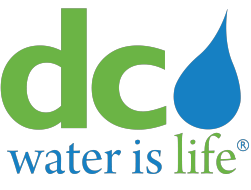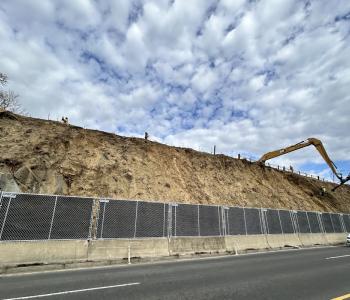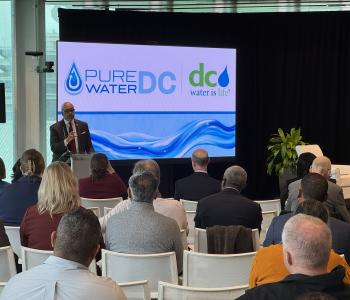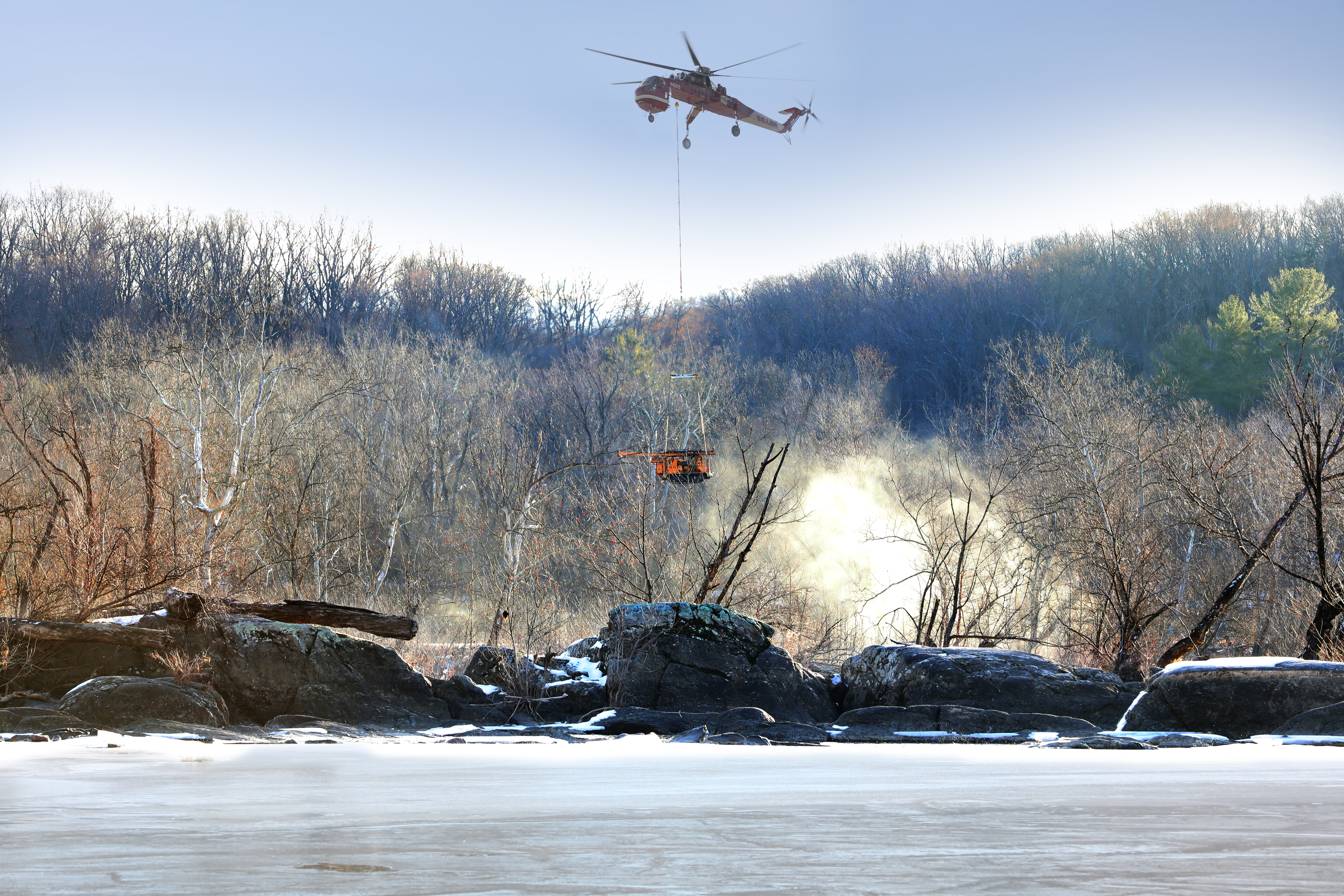DC Water and the University of Innsbruck Collaborate for Next Gen Wastewater Treatment Technology;
The University of Innsbruck and DC Water today announced a partnership to refine and market their next gen wastewater treatment technology, making advances to the first generation, the DEMON®-system, patented by the University and piloted at DC Water. It is a nitrogen removal process, addressing one of the most pressing issues facing the global water and wastewater industry in the 21st centurynutrient removal.
The DEMON-system is a biological and energy-efficient process that removes nitrogen from wastewater in an environmentally friendly way. Nitrogen can be harmful when discharged to waterways because it promotes algae growth that can deplete oxygen that fish and other aquatic life need to thrive. In fact, the Chesapeake Bay contains dead zones where nitrogen has caused algae blooms that block sunlight from reaching marine animals, fishes and plants.
To combat this problem, some, but not all, wastewater treatment plants convert the nitrogen compounds to nitrogen gas that is safely released into the atmosphere.
Traditional wastewater treatment technology uses microbes that require a highly oxygenated environment, and that feed on carbon, for this conversion. DEMON employs a microbe that was discovered in 1996 that requires less oxygen and carbon to perform this conversion, using 60 percent less energy and 90 percent less carbon. Since oxygenating treatment tanks consumes extremely large quantities of electricity, and the carbon food source, methanol, is the most expensive chemical for most plants, this can result in significant cost savings to any treatment plant.
This innovative technology has already been implemented in 70 wastewater treatments plants around the world and is now being further refined and marketed jointly with the University and DC Water. Improvements include the addition of screens for retaining the anammox bacteria, enabling the system to be fed continuously rather than starting and stopping while the settling process occurs. For new construction, this allows nitrogen loading rates to be increased significantly or the volume of new tanks to be reduced.
DC Water is currently building the worlds largest DEMON system at the Blue Plains Advanced Wastewater Treatment Plant. Similar systems are currently being planned and built in Stockholm, Singapore, Yokohama and Jerusalem.
Co-inventor of the DEMON process, Bernhard Wett, said, This technology can be implemented in less space than conventional methods, significantly reducing construction costs and further benefiting wastewater plants that have maxed out their land use. We successfully implemented the first system in a wastewater treatment plant in Austria that became the first energy self-sufficient wastewater treatment plant globally. The partnership with DC Water will help other treatment plants cut costs and potentially reach this goal.
Commenting on todays announcement, DC Water CEO and General Manager George S. Hawkins, said, The partnership with the University of Innsbruck to enhance and market this technology is another example of DC Waters commitment to innovation that reduces operating costs, while also providing alternative revenue streams to lessen the burden of rate increases. Collaborating with successful and like-minded partners such as the University of Innsbruck, on promising opportunities, are a priority for DC Water.
University of Innsbruck Rector Tillman Mark added, The partnership with DC Water, a leading U.S. water utility with a reputation for innovation, will help develop the next generation in wastewater treatment and ultimately benefit wastewater treatment plants throughout the world.







